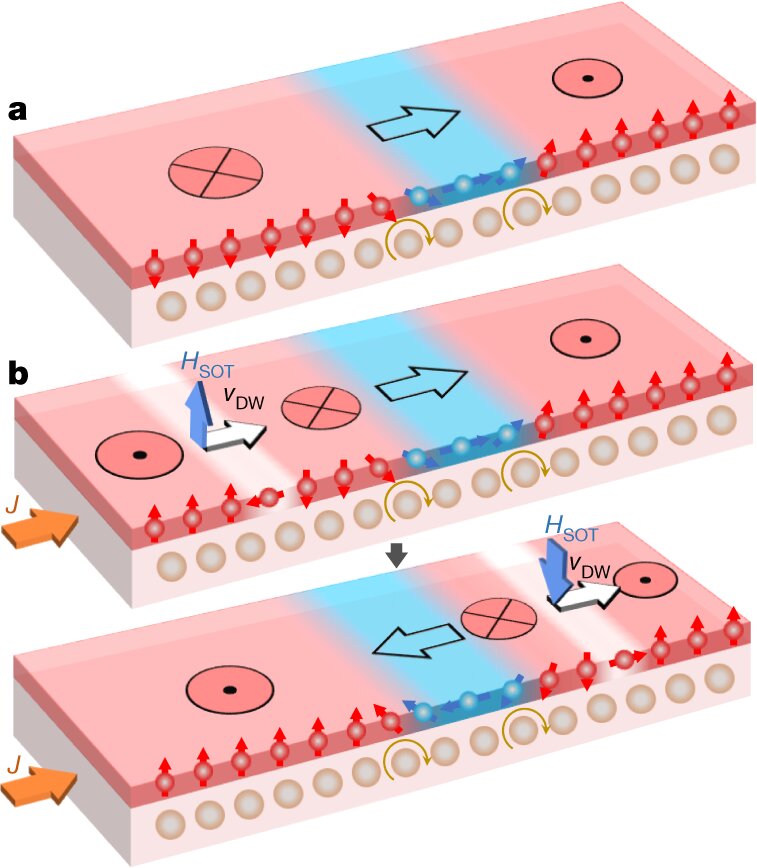
Researchers from ETH Zurich and the Paul Scherrer Institute has developed a way to build an all-electric magnetic logic gate.
The work builds on the idea of magnetic racetrack memory, in which wires are moved by flowing electrons. The team built a NOT logic gate that reverses the direction of magnetic domains using electricity. The gate consisted of a flattened, unmagnetized platinum wire covered with a layer of magnetized cobalt. The magnetism in the cobalt is perpendicular to the wire, except in the fixed domain wall (the boundary between magnetized areas of the wire). And in the fixed domain, magnetism is allowed to rotate either left or right (chirality). When electricity is applied to one end of the wire on the platinum base, the moving domain wall is pushed along the wire. When it collides with another fixed wall, the direction of the magnetic force (moment) is switched, and a new domain with a reversed moment is created on the opposite side of the wall. The result was a flipped bit.
The researchers tested their gate by adding it to a junction, allowing for the creation of NOR and NAND gates. The researchers suggest their device could be a first step toward the development of a logic gate for commercial products without the need for any external magnetic fields. The next step will be to reduce the amount of current, followed by a better means of detecting the input/output states of the gate.
The paper has been published in the journal Nature. (Nature)
